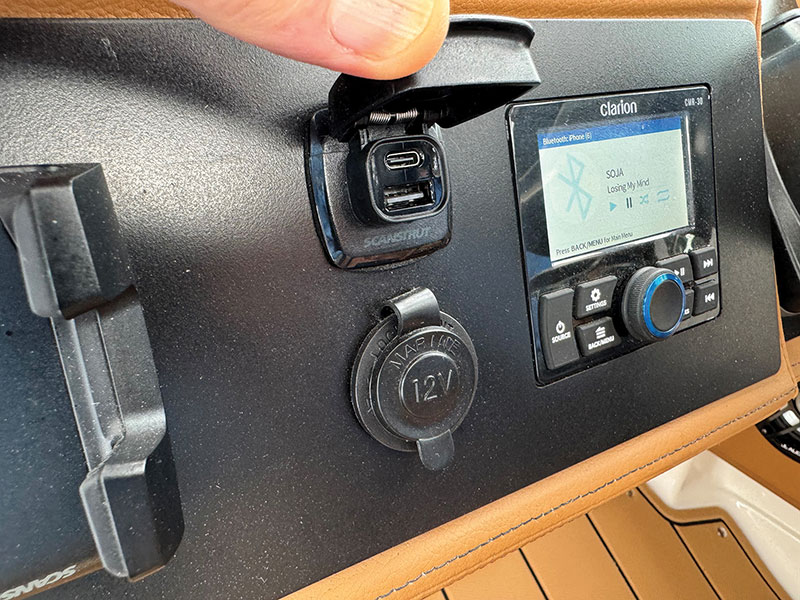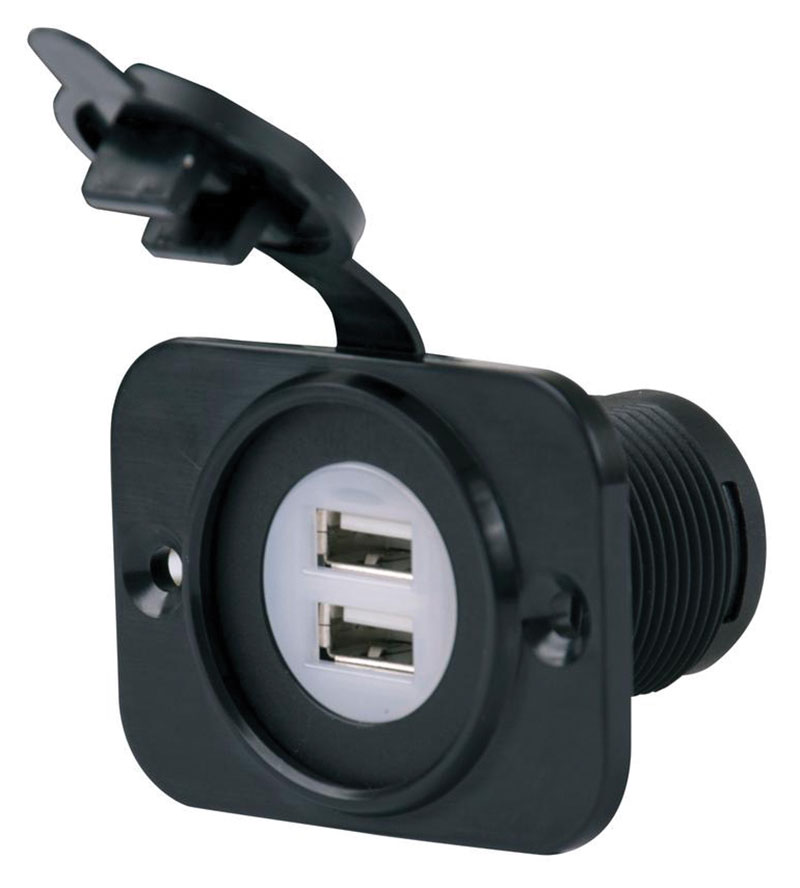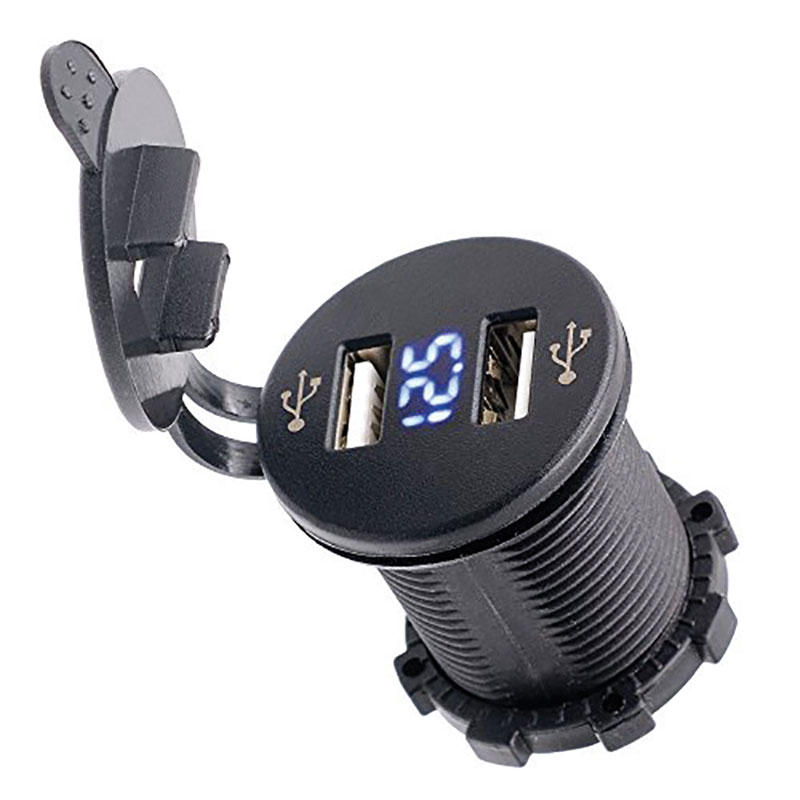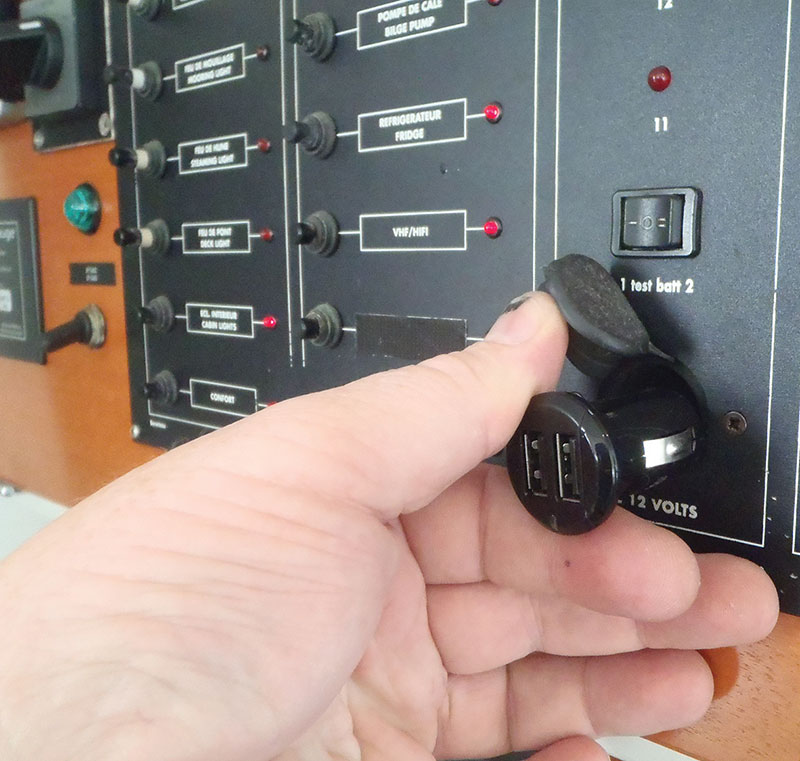
Installing a DC USB charger.
by Capt. Frank Lanier
With today’s reliance on smartphones and tablets for navigation, entertainment and pretty much everything in between, the need for USB chargers onboard is greater than ever. Most boats have at least one standard “cigarette lighter” 12 VDC outlet (allowing you to insert a USB charge adaptor); however, the contacts can be unreliable aboard a bouncing boat and the protruding adaptor is prone to snagging. They’re also typically located near the helm, which is convenient for the captain, but not so much for passengers and crew.
Installing one or multiple USB chargers throughout your boat is a much better way. Here’s how to add a convenience that both captain and crew can appreciate.
First things first
The first step is selecting a USB outlet. A quick online search will show seemingly limitless options. You can narrow it down by selecting only water-resistant units constructed of marine-grade components, such as those from Marinco, Mastervolt, Blue Sea and the like. Those are the brands you’ll typically see at most marine chandleries or online distributors. Other features to look for are a water-resistant cover, dual USB ports and a power indicator light or backlighting. Some units even incorporate a 12 VDC power meter, providing a quick, convenient way to monitor battery voltage.
But before you fire up that drill or hole saw, take
a moment to step back and visualize the installation as a whole. You’ve chosen an ideal location, but can you access it from behind to facilitate installation? Is there a path to run the power wires? This provides a good opportunity to make a list of tools and materials needed to complete the job.
Doing the deed
While you’ll want to follow the manufacturer’s instructions, here are some general tips to help you along the path to USB charging nirvana. For this article, we’ll assume the hole is being drilled through a solid fiberglass panel.
- Select an area for the outlet that’s convenient for charging but protected from water exposure when the outlet cover is not in place.
- Be doubly sure of what’s on the other side of the selected mounting location. Drilling into equipment, hoses or electrical wiring is never conducive to a good install!
- Turn off all power prior to drilling. Place battery switches to “off,” or better yet, disconnect the batteries completely. If there are AC circuits onboard, turn off all breakers, inverters, etc., and unplug shore power plugs. Leave all power off until the project is completed and you’re ready to test your new installation.
- You can use a spade bit to drill the mounting hole for the outlet, but a hole saw will produce a much cleaner cut. When drilling through gelcoat, cover the mounting area with masking tape to protect the gelcoat from scratches and help prevent chipping while drilling. Another trick to prevent chipping is to run the hole saw in reverse until it’s through the gelcoat, then switch to forward.
- Use good-quality marine-grade wire with two conductors, a red (positive) wire and black or yellow (negative) one. Support the wire run every 18 inches and provide chafe protection where necessary.
- Begin the wire run at the plug end by feeding it through the outlet hole and working towards the DC power panel. Leave about a foot of wire hanging out at the plug end to make installation of the outlet easier once the wire run is completed.
- Use marine-grade connectors for all power connections, preferably heat-shrink-style crimp-on connectors to prevent corrosion.
- Connect the wire at the rear of the breaker panel. This will typically involve a positive connection on the switched side of the main breaker and a negative connection to the negative bus bar. Use crimp-on ring terminals and ensure they are the correct size for the stud or screw they’re attached to.
- Ensure the installation is protected by an appropriately sized fuse per the manufacturer’s instructions. This may involve installation of a fuse holder in the positive wire between the panel and outlet.
- Connect the wires to the back of the outlet plug. This will typically be done using female spade connectors.
- Drill the mounting screw holes and mount the outlet flange. Place a small amount of marine-grade silicone beneath the flange at the holes to prevent water entry. Some outlets will have a mounting nut that threads onto the rear of the plug, eliminating the need for mounting screws.
- Once the installation is complete, turn the power back on and test the outlet by plugging in a phone, tablet or other suitable device.







